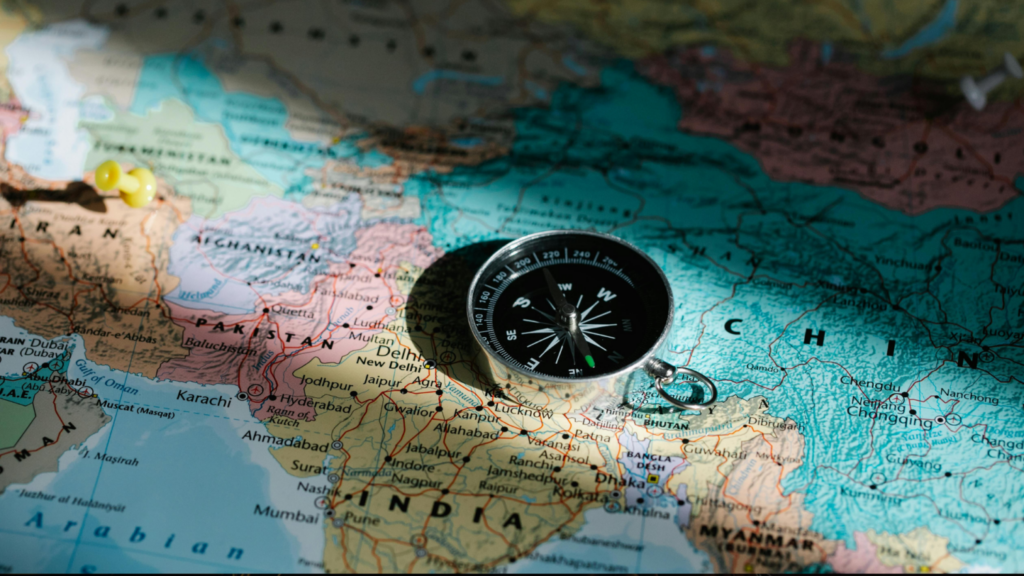Navigating Political Risk and Fostering Resilience: Lessons from Iraq and Afghanistan in Post-Conflict Development
In conflict-affected regions, the path to sustainable development is fraught with challenges, from political instability and governance breakdowns, to deadlocks in decision-making and weak institutional structures. Therefore, it is crucial to understand how these factors influence both immediate recovery efforts and long-term resilience. Political risks, such as corruption, factionalism, and fragile institutions, pose significant barriers to effective development. This article explores how a strategic approach to international cooperation can help mitigate these risks, fostering sustainable development in post-conflict environments. By examining recent case studies and leveraging existing research, it provides a framework for navigating uncertainties in these volatile settings.
Political Risk in Post-Conflict Environments
Political risk in post-conflict states arises from a range of factors, including power struggles, a lack of trust in government, and widespread corruption. These challenges undermine efforts to rebuild state institutions and can lead to a resurgence of violence. Political risk analysis is essential for understanding how these dynamics affect development. The data below illustrates global trends in political violence over the past five years:

A report by the World Bank (2023) highlights that post-conflict countries with weak governance structures are more likely to experience economic setbacks, limiting their recovery. In such. contexts, international actors, including foreign governments and multilateral organisations, play a pivotal role in supporting governance reforms and reducing these threats.
The challenge for international actors is to design interventions that both address immediate humanitarian needs and build the capacity of local institutions. Political risk must be assessed at multiple levels, including governance, economic stability, and social cohesion. Without an integrated risk management strategy, development efforts may inadvertently support corrupt or undemocratic regimes, exacerbating instability.
The Political Economy of Post-Conflict Recovery
In post-conflict regions, economic recovery is closely tied to political stability. Countries affected by conflict often face severe economic crises, with high levels of poverty, unemployment, and a collapse of public services.
Figure 2: In almost half of all cases, GDP per capita remains below its counterfactual growth path 25 years after war

Research by the International Monetary Fund (2022) indicates that countries emerging from conflict experience slower economic growth than stable nations, owing to a lingering political instability and a lack of investor confidence. In the aftermath of conflict, political instability and. fragile governance structures often create a risk-averse atmosphere, making investors hesitant to commit capital or resources. Investors seek stable environments where their investments are protected, and where there is predictability in economic policy and governance.
When investor confidence is low in post-conflict countries, economic growth can be significantly slower. The absence of sufficient investment, in turn, hinders economic recovery and sustainable development, perpetuating a cycle where the failure to address political risks prevents productivity, and the lack of growth further exacerbates political instability.
For example, the rebuilding of infrastructure in post-conflict zones is often stymied by weak institutions and the risk of corruption. In many cases, reconstruction projects are delayed or mismanaged due to political manoeuvring and a lack of oversight. Thus, international support must prioritise strengthening governance structures, improving transparency, and ensuring that development projects are executed with accountability.
An empirical analysis comparing economies where income per capita returned to trend levels within ten years (as seen in around one-third of all cases), with those that did not, suggests that such full recoveries are more likely to happen: (1) in economies with stronger GDP per capita growth and higher-quality democratic institutions before the war; (2) after shorter wars; (3) where wartime drops in GDP per capita are smaller, and (4) where there is no return to hostilities after the end of the war. Full recoveries are also observed less frequently after civil wars (see Figure 3).
Figure 3: Full recoveries are less likely in weaker economies and after civil wars

Case Study: Iraq – A Multifaceted Political Landscape
Iraq offers a compelling example of the challenges and opportunities in post-conflict development. The 2003 invasion and subsequent power vacuum created a fragmented political landscape. Sectarian tensions, corruption, and the lack of a unified government led to instability that has persisted for years. According to a report from the United Nations Assistance Mission for Iraq (2023), despite significant international aid and investment, Iraq’s recovery has been slow due to the political risks stemming from the country’s fragmented system.
The Iraqi government’s failure to establish inclusive governance has led to economic mismanagement, while militias and political factions continue to undermine state authority. The rise of ISIS in the aftermath of the conflict serves as a potent reminder of the consequences of failing to address political risk. Therefore, international actors must ensure that recovery efforts are not limited to economic aid, but are integrated with long-term political solutions that address the underlying causes of instability, such as governance reform and anti-corruption measures.
One of the primary lessons from Iraq’s post-conflict recovery is the necessity of implementing a comprehensive political strategy that goes far beyond the mere provision of aid. Post-conflict recovery efforts must prioritise rebuilding both physical infrastructure and political institutions, particularly by fostering the rule of law, ensuring the independence of the judiciary, and strengthening the legitimacy of state governance. It is equally critical to address historical grievances that fuel sectarian divides and to promote political inclusivity that encompasses marginalised groups, including ethnic and religious minorities. The failure to incorporate these elements into the recovery strategy resulted in significant challenges in Iraq. The marginalisation of Sunni communities, coupled with the lack of a unified political vision, contributed directly to the rise of ISIS in the years following the initial recovery efforts, as disenfranchised groups sought to assert their influence through violent means.
For international actors involved in post-conflict recovery, the key takeaway from Iraq’s experience is the importance of maintaining a sustained, long-term commitment to both stability and governance reform. Recovery efforts cannot be seen as short-term interventions, but rather as part of an ongoing process of institutional development that spans many years or even decades. Effective political risk assessment must therefore consider the complex, multi-dimensional nature of post-conflict political environments, where power struggles, deep-rooted sectarianism, and shifting alliances can rapidly destabilise fragile states. This means anticipating potential flashpoints of instability—such as unaddressed ethnic tensions or economic inequalities—and aligning international support with strategies designed to mitigate these risks over the long term.
Lessons from Afghanistan: Enhancing Post-Conflict Recovery through Strategic International Cooperation
A prime example of strategic international cooperation can be seen in the international community’s role in Afghanistan following the 2001 invasion. While Afghanistan’s recovery, much like Iraq’s, faced significant challenges, lessons learned from Iraq’s post-conflict experience informed more targeted approaches. The emphasis on long-term political stabilisation, capacity-building of local institutions, and addressing historical grievances was more prominently featured in Afghanistan’s later stages of recovery.
Notably, the United States and NATO partners worked alongside Afghan authorities to build a more inclusive government, promote reconciliation among ethnic groups, and develop key sectors such as education, infrastructure, and governance. However, this long-term commitment faced setbacks, particularly due to the failure to fully integrate local ethnic groups and address deep-rooted corruption. International cooperation in Afghanistan showed that, when properly coordinated, assistance that goes beyond mere reconstruction can help stabilise a region.
These lessons can be applied to current conflict zones, such as Libya or Yemen, where international actors must prioritise sustained engagement, inclusive governance, and institution-building in order to reduce the risk of conflict re-emergence and ensure long-term peace.
The Role of International Cooperation in Mitigating Political Risks
To effectively address political risks and promote sustainable development in post-conflict states, international cooperation is essential. Multilateral organisations, such as the United Nations and the World Bank, can play a key role in facilitating dialogue and supporting governance reforms. Their efforts should focus on creating political consensus, promoting transparency, and strengthening the rule of law.
A critical component of international cooperation is ensuring that local actors – governments, civil society, and businesses – are involved in decision-making. According to a 2022 report by the United Nations Development Programme (UNDP), the inclusion of local actors in the recovery process helps build political legitimacy and foster social cohesion. By working collaboratively with local stakeholders, international organisations can ensure that development efforts are aligned with the needs and priorities of the affected population.
Additionally, international actors must be vigilant in assessing the political risks associated with external investments. For instance, foreign direct investment (FDI) can contribute to economic recovery, but without proper governance structures, it may reinforce corrupt practices and exacerbate inequality. The private sector, particularly corporations with a presence in post-conflict regions, must adhere to principles of environmental, social, and governance (ESG) to ensure that their operations do not inadvertently contribute to political instability.
Conclusion: A Framework for Sustainable Recovery
Post-conflict states face significant challenges in achieving sustainable development, but by incorporating political risk analysis into recovery strategies, international actors can better manage these challenges. A comprehensive approach that combines governance reform, economic recovery, and social cohesion is essential for building long-term resilience. Political risk analysts, by providing data-driven insights and recommendations, can ensure that international efforts are aligned with the realities on the ground. Ultimately, the success of post-conflict recovery depends on international cooperation that addresses both the symptoms and root causes of conflict. Through strategic partnerships, transparent governance, and a commitment to long-term stability, the international community can foster resilient, sustainable development in post-conflict regions.
Bibliography
ACLED Conflict Index Trends. (2023) Political Violence by Region. Available at: https://acleddata.com/conflict-index/ [Accessed 27 March 2025].
Centre for Economic Policy Research (CEPR). (2023) Economics of Post-War Recoveries and Reconstructions. Available at: https://cepr.org/voxeu/columns/economics-post-war-recoveries-and-reconstructions [Accessed 27 March 2025].
International Monetary Fund (IMF). (2022) Post-Conflict Economic Recovery: Challenges and Opportunities. Washington, D.C.
United Nations (UN). (2023) Report on the Political Economy of Post-Conflict Iraq. New York.
United Nations Development Programme (UNDP). (2022) Inclusive Recovery: Lessons from Post-Conflict Regions. Geneva.
World Bank. (2023) Political Risk and Development in Fragile States. Washington, D.C.



